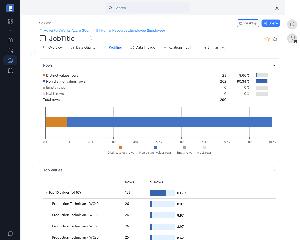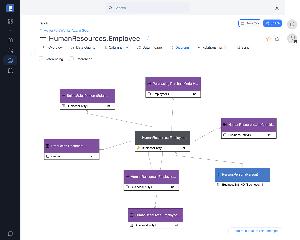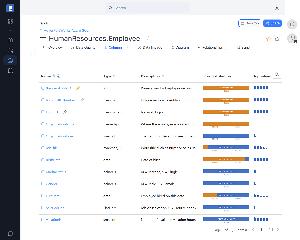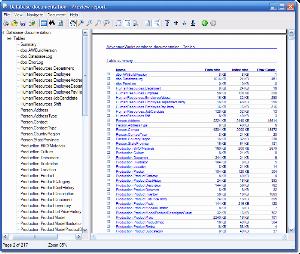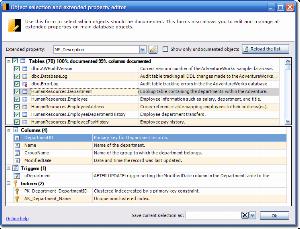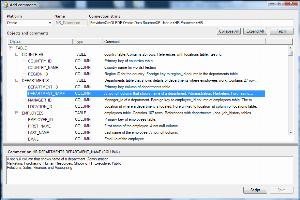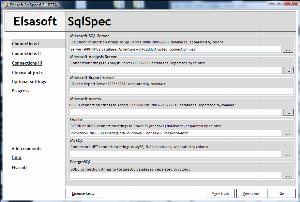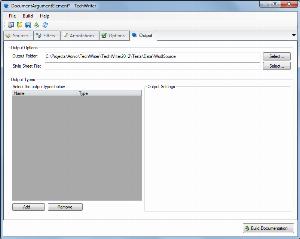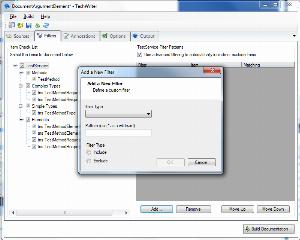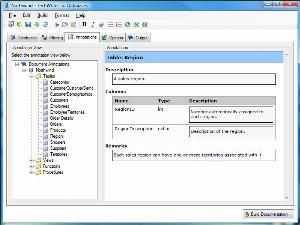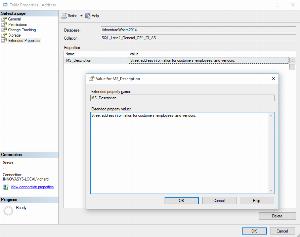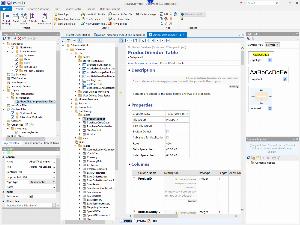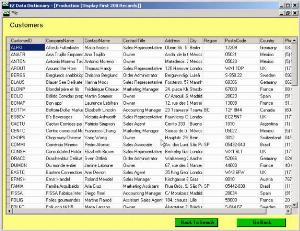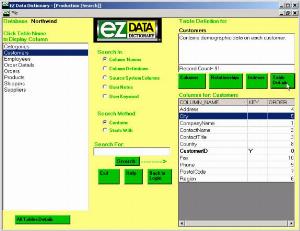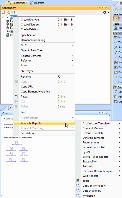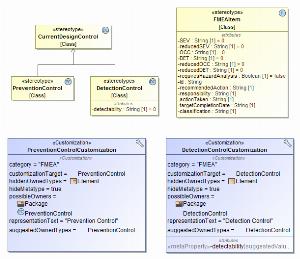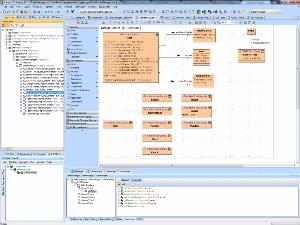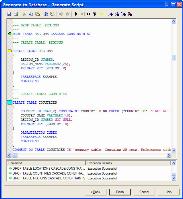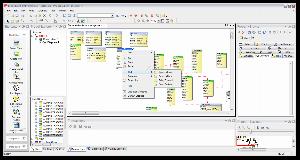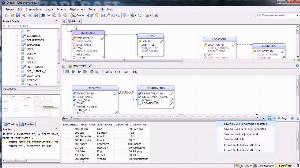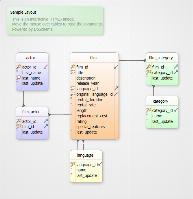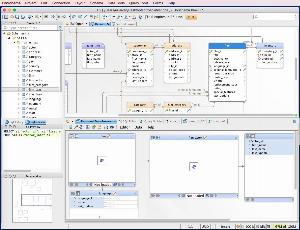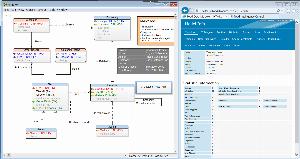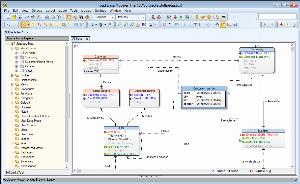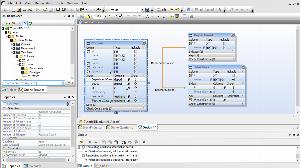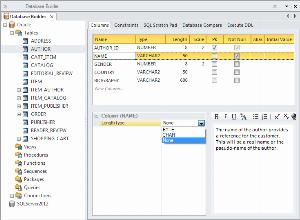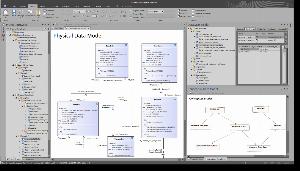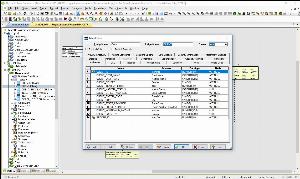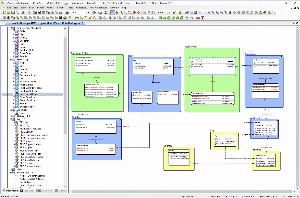Data dictionary tools for MS Access
List of tools that enable design and building of data dictionaries .
Data Dictionary is a set of important information about data used within an organization (metadata). This information includes names, definitions, and attributes about data, owners, and creators of assets. Data Dictionary tools provide insights into meaning and purposes of data elements. They add useful aliases about the scope and characteristics of data elements, as well as the rules for their usage and application.
Dataedo
With Dataedo, users can build a comprehensive data dictionary that documents tables, columns, data types, and relationships. This ensures consistency in data definitions, reduces ambiguity, and enhances data transparency across teams.
| Desktop/Cloud: | Desktop |
|---|---|
| ER Diagram: |
|
| Export: | HTML,MS Excel,PDF |
| Metadata stored in: | Documentation repository/file |
| Commercial: | Commercial |
| Free edition: |
|
| Notable features: | ER Diagrams, Data Profiling, Data Lineage, Data Quality, Schema Change Tracking, Sensitive Data Classification |
| Runs on: (for desktop): | Mac OS,Windows |
dbdesc
dbdesc is a powerful tool to help you document your databases. It can produce detailed documents describing your databases. It has a built-in extended property editor and documentation exporter.
| Desktop/Cloud: | Desktop |
|---|---|
| ER Diagram: |
|
| Export: | HTML,MS Word,PDF,RTF |
| Metadata stored in: | SQL Server extended properties |
| Commercial: | Commercial |
| Free edition: |
|
| Notable features: | Extended property editor, Documentation exporter |
| Runs on: (for desktop): | Windows |
Elasoft SqlSpec (discontinued)
SqlSpec is a database documentation tool that generates documentation about all the objects (tables, views, stored procedures, triggers, indexes, constraints, functions, etc) in your database. It has both GUI and command-line interface. It enables you to generate entity-relation diagrams.
| Desktop/Cloud: | Desktop |
|---|---|
| ER Diagram: |
|
| Export: | CHM,HTML |
| Metadata stored in: | Database metadata |
| Commercial: | Commercial |
| Free edition: |
|
| Notable features: | Documents also Analysis Services, Reporting Services, Integration Server |
| Runs on: (for desktop): | Windows |
xSQL Documenter
xSQL Documenter provides comprehensive, uniform, and easily navigable database documentation in HTML and compiled CHM format. It can run as a console application, useful for automating the process of generating documentation for your databases on a schedule, or for integrating xSQL Documenter into your development process.
| Desktop/Cloud: | Desktop |
|---|---|
| ER Diagram: |
|
| Export: | CHM,HTML |
| Metadata stored in: | Database metadata |
| Commercial: | Commercial |
| Free edition: |
|
| Notable features: | Dependency diagrams, Data model diagrams, Custom extended properties |
| Runs on: (for desktop): | Windows |
TechWriter for Databases
TechWriter for Databases is a documentation tool for databases that leverages the information locked inside your database to automatically produce database reference documentation.
| Desktop/Cloud: | Desktop |
|---|---|
| ER Diagram: |
|
| Export: | CHM,HTML,MS Word,PDF,RTF,XML,XPS |
| Metadata stored in: | SQL Server extended properties |
| Commercial: | Commercial |
| Free edition: | - |
| Notable features: | Ability to organize topics into a hierarchical table of contents |
| Runs on: (for desktop): | Windows |
Document! X
Document! X provides automatic documentation of SQL Server, Access, Oracle and other OLE DB databases. The generated database documentation is an accurate and comprehensive documentation set covering Schemas, Tables, Columns, Indexes, Relationships, Views, Stored Procedures, Triggers, etc. Besides that, you can extend the source descriptions using the rich authoring environment provided by the Document! X Content File Editor.
| Desktop/Cloud: | Desktop |
|---|---|
| ER Diagram: |
|
| Export: | XML |
| Metadata stored in: | Database metadata |
| Commercial: | Commercial |
| Free edition: |
|
| Notable features: | Automated accurate and comprehensive documentation |
| Runs on: (for desktop): | Windows |
EZ Data Dictionary
EZ Data Dictionary is a user-friendly data dictionary tool for business and technical end users. Documenting database through EZ Data Dictionary provides better results as compared with Excel. It allows users to review database elements and definitions in a friendly environment and provides better communication between systems professionals and end-users.
| Desktop/Cloud: | Desktop |
|---|---|
| ER Diagram: |
|
| Export: | HTML,PDF |
| Metadata stored in: | Documentation repository |
| Commercial: | Commercial |
| Free edition: | - |
| Notable features: | Compare two schemas |
| Runs on: (for desktop): | Windows |
MagicDraw
MagicDraw is the award-winning business process, architecture, software and system modeling tool with teamwork support. It includes the entity-relationship diagram, SQL database modeling/diagramming and DDL script generation/reverse features. Its automatic report generation engine rapidly-produce comprehensive, professional requirements, software design documentation, elements of MagicDraw data dictionary, and other types of reports.
| Desktop/Cloud: | Desktop |
|---|---|
| ER Diagram: |
|
| Export: | HTML,PDF,RTF |
| Metadata stored in: | Program metadata |
| Commercial: | Commercial |
| Free edition: |
|
| Notable features: | User-friendly visual interface, fast database modeling, Work collaboratively on the same model, Automatic report generation |
| Runs on: (for desktop): | Linux,Mac OS,Windows |
ModelRight
ModelRight is a database design and data modeling tool. It provides the documentation of your database with richly formatted notes, definitions, comments, and revision notes.
| Desktop/Cloud: | Desktop |
|---|---|
| ER Diagram: |
|
| Export: | HTML |
| Metadata stored in: | Database metadata |
| Commercial: | Commercial |
| Free edition: |
|
| Notable features: | Entity relation diagram, reverse engineering, compare models, innovative user-interface |
| Runs on: (for desktop): | Windows |
DbSchema
DbSchema facilitates to design, document and manage SQL and NoSQL databases. It is an intuitive designer for complex databases. It allows editing tables or columns directly in the layout, by double-clicking them.
| Desktop/Cloud: | Desktop |
|---|---|
| ER Diagram: |
|
| Export: | HTML,PDF |
| Metadata stored in: | Database metadata |
| Commercial: | Commercial |
| Free edition: |
|
| Notable features: | Entity relationship diagram, Reverse engineer schema from database, Relational data browse, SQL editor |
| Runs on: (for desktop): | Linux,Mac OS,Windows |
Toad Data Modeler
Toad Data Modeler enables developers, DBAs, and designers to create, edit, maintain, and document quality database designs and structures across various database platforms.
| Desktop/Cloud: | Desktop |
|---|---|
| ER Diagram: |
|
| Export: | HTML,PDF,RTF |
| Metadata stored in: | Database metadata |
| Commercial: | Commercial |
| Free edition: |
|
| Notable features: | Entity relationship diagram, Model customization, Easy migration |
| Runs on: (for desktop): | Windows |
DatabaseSpy
Altova DatabaseSpy is the unique multi-database query, design, and database comparison tool that even generates elegant charts directly from query results. The tool lets you can examine tables and relationships in an existing database, edit tables to better suit your needs, or even can add entire tables and specify all their column attributes and relationships to other tables from scratch.
| Desktop/Cloud: | Desktop |
|---|---|
| ER Diagram: |
|
| Export: | HTML,MS Word,PDF,RTF |
| Metadata stored in: | Database metadata |
| Commercial: | Commercial |
| Free edition: |
|
| Notable features: | Graphical database design, Complete DDL scripts for database schemas, Data visualization and charting, Advanced database reporting with charts, Database content editor |
| Runs on: (for desktop): | Windows |
Enterprise Architect
Enterprise Architect is a fully featured database modeling platform that enables the user to work with their Physical Data models at all stages, from design right through to the implementation of the live database. With Enterprise Architect, a data dictionary can be created that defines data elements, including details such as names, aliases descriptions and allowable values.
| Desktop/Cloud: | Desktop |
|---|---|
| ER Diagram: |
|
| Export: | HTML |
| Metadata stored in: | Program metadata |
| Commercial: | Commercial |
| Free edition: |
|
| Notable features: | Entity relationship diagram, Integrated modeling platform, visual execution analysis, code generation, reverse engineering and scripting |
| Runs on: (for desktop): | Linux,Mac OS,Windows |
ER/Studio
ER/Studio Data Architect helps to easily reverse- and forward-engineer, compare and merge, and visually document data assets across multiple platforms and data sources. The Data Dictionary is a feature of ER/Studio that allows the sharing of many objects including domains, defaults, rules, and attachments. Using the Data Dictionary you can enforce standards, promote reuse, and build a common framework across all models.
| Desktop/Cloud: | Desktop |
|---|---|
| ER Diagram: |
|
| Export: | HTML |
| Metadata stored in: | Documentation repository/file |
| Commercial: | Commercial |
| Free edition: |
|
| Notable features: | Data modeler, Entity relation diagram, Model sharing |
| Runs on: (for desktop): | Windows |
Alation Data Catalog
Alation data dictionary defines and describes technical data terms. Data terms could be database schemas, tables, or columns. Once connected to data sources, Alation automatically indexes data and populates catalog pages. For example, a column catalog page shows the technical column name, a business title name, the data type, and popularity. Additional context can be added to the data dictionary, for shared understanding across the organization.
| Desktop/Cloud: | Cloud |
|---|---|
| ER Diagram: |
|
| Export: | MS Excel |
| Metadata stored in: | - |
| Commercial: | Commercial |
| Free edition: |
|
| Notable features: | ML auto-suggested business glossary terms |
| Runs on: (for desktop): | - |
Key functionality of Data Dictionary tools is to give users the ability to document data. Moreover, very important is the possibility to create a collection of multiple repositories, based on different system engines. For a better understanding of the data, some tools allow visualization of the data structure using ERD (Entity-Relationship Diagrams).
From the organization's point of view, a community module within a data dictionary tool proves to be useful. It facilitates the proper information flow, as well as provides sharing opinions on specific objects among the members of an organization.
Nowadays, data discovery and understanding becomes crucial for proper organization performance. There are many benefits to using Data Dictionaries, such as:
• helps avoid data inconsistencies problems,
• it allows introducing unified nomenclature used in the project,
• Make data searchable, and understandable,
• Create a single source of truth about the data from different repositories,
The prepared list includes simple, open-source data dictionaries as well as more advanced software.
 SQL Server
SQL Server
 Oracle
Oracle
 MySQL
MySQL
 PostgreSQL
PostgreSQL
 Amazon Redshift
Amazon Redshift
 Azure SQL Database
Azure SQL Database
 DBT
DBT
 Google Big Query
Google Big Query
 IBM DB2
IBM DB2
 MariaDB
MariaDB
 SAP HANA
SAP HANA
 Snowflake
Snowflake
 SQLite
SQLite
 Teradata
Teradata
 Vertica
Vertica
